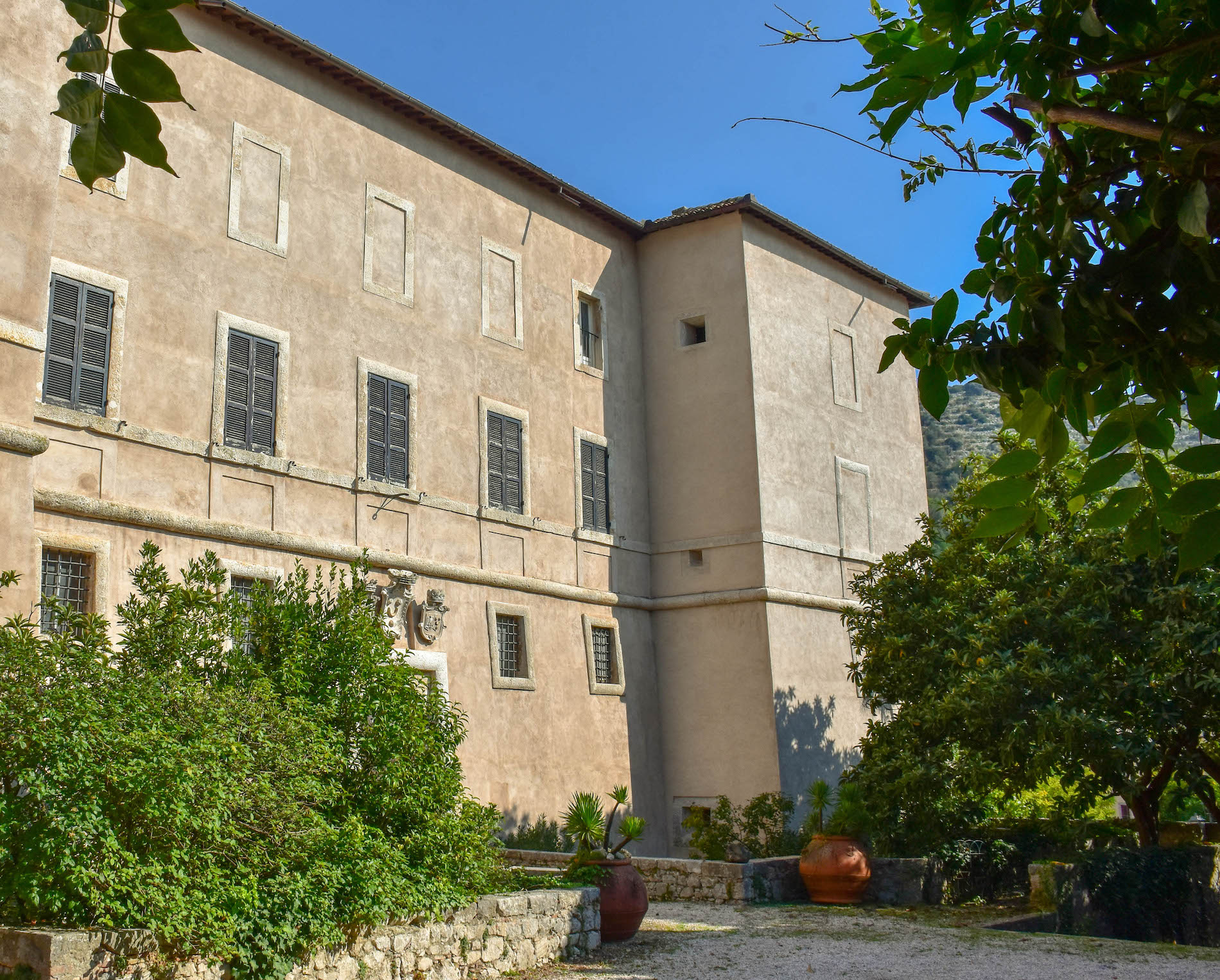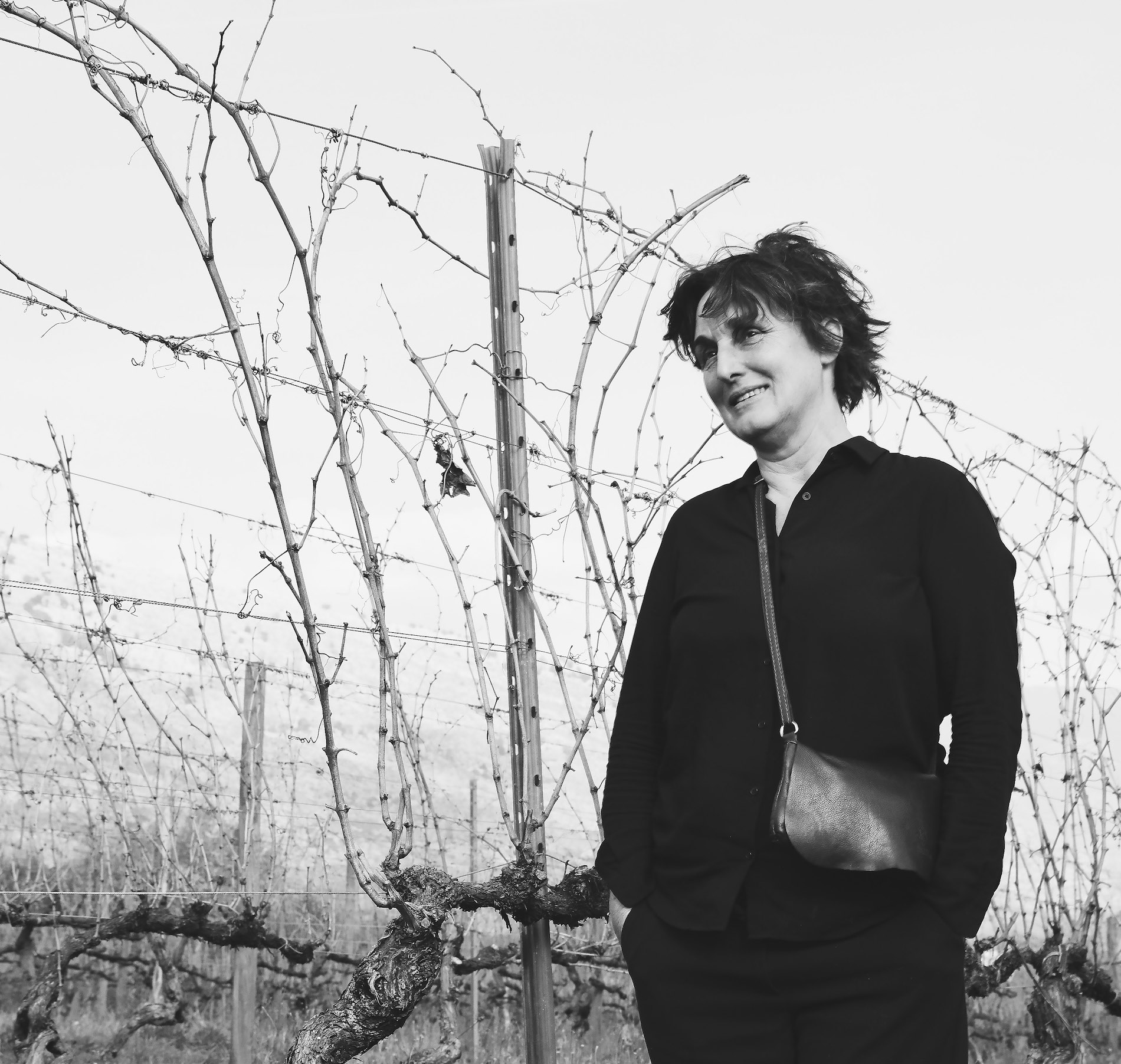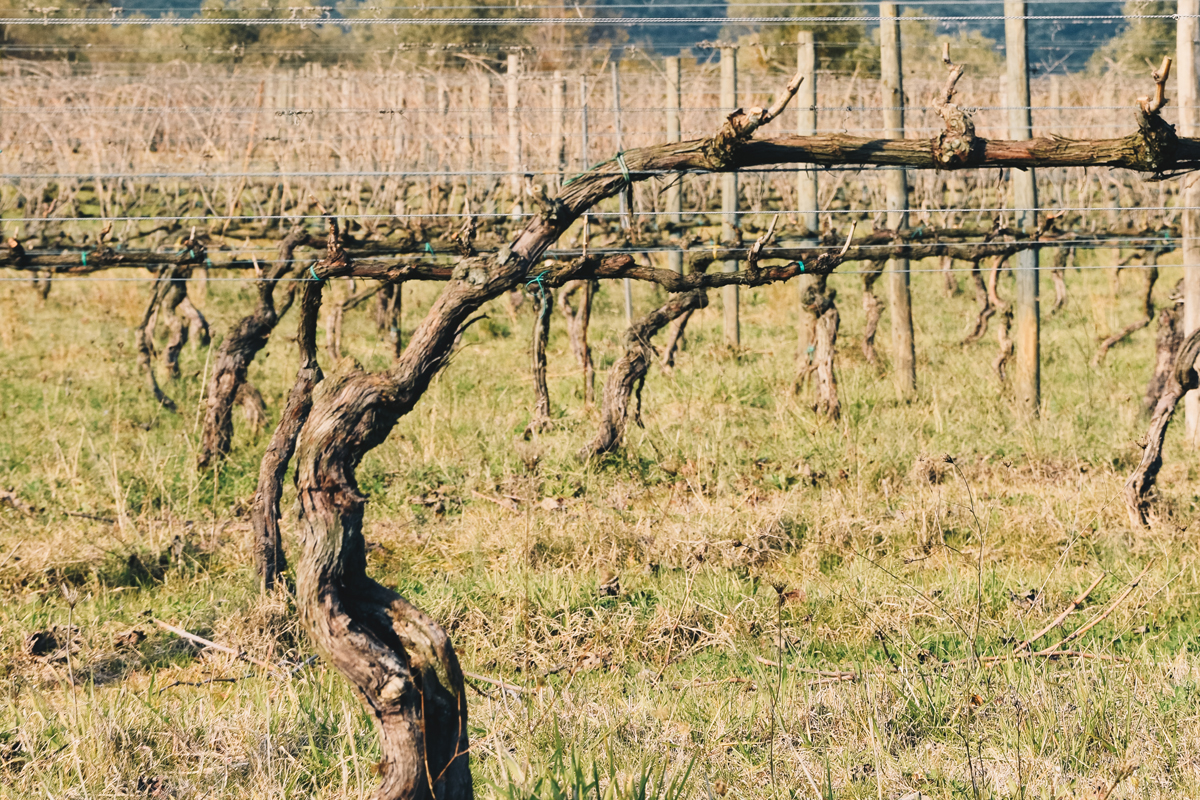Palazzo Prossedi
Palazzo Prossedi was built in 1100 in the borgo – or medieval village – of Prossedi, in the province of Latina. It straddles the hill that faces the valley of the Amaseno river in the region of Lazio. In 1125 the village was burned to the ground by the troups of pope Honorius II.
The Palazzo was subsequently rebuilt and over the centuries it changed hands between the noble families of Chigi, Massimo, Gabrielli and Altieri. In 1758 it was sold again to the Gabrielli family by the Altieris. Angelo Gabrielli’s descendant, Placido Gabrielli, who married his cousin, Augusta Bonaparte, became the fourth and last of the Prossedi princes.
After their deaths, at the beginning of the 20th century, the Palazzo was passed down to my great-grandfather, Alberto del Gallo di Roccagiovine. He was Placido and Augusta’s cousin; their uncle/grandfather was Luciano, brother of Napoleon Bonaparte.
The Palazzo’s first vines were planted by the Gabriellis at the end of the 18th century on the hillsides beneath the borgo, in the Amaseno valley.
Palazzo Prossedi
Palazzo Prossedi was built in 1100 in the borgo – or medieval village – of Prossedi, in the province of Latina. It straddles the hill that faces the valley of the Amaseno river in the region of Lazio. In 1125 the village was burned to the ground by the troups of pope Honorius II.
The Palazzo was subsequently rebuilt and over the centuries it changed hands between the noble families of Chigi, Massimo, Gabrielli and Altieri. In 1758 it was sold again to the Gabrielli family by the Altieris. Angelo Gabrielli’s descendant, Placido Gabrielli, who married his cousin, Augusta Bonaparte, became the fourth and last of the Prossedi princes.
After their deaths, at the beginning of the 20th century, the Palazzo was passed down to my great-grandfather, Alberto del Gallo di Roccagiovine. He was Placido and Augusta’s cousin; their uncle/grandfather was Luciano, brother of Napoleon Bonaparte.
The Palazzo’s first vines were planted by the Gabriellis at the end of the 18th century on the hillsides beneath the borgo, in the Amaseno valley.
History
My grandfather, Napoleone del Gallo di Roccagiovine, continued the winemaking tradition by enlarging the vineyards and producing a celebrated vin santo as well as white and red wines.
He also made olive oil from Itrana and Frantoiano olives from groves situated above the borgo, on the Lepini hills, at 700 metres. The olives were crushed and pressed in the mill that had been built beside the Palazzo in 1500. For centuries this was the only frantoio in the vast area that comprises the Monti Lepini and the valley of the Amaseno. Up until 20 years ago, olives were the stars of this landscape and of its local economy.
When my grandfather died in 1986, my mother, Giacinta del Gallo di Roccagiovine, inherited the Palazzo. She and her husband were serious painters and they preferred to leave the production of oil and wine to the farm and cellar managers.
The Palazzo remained as the family’s summer home until 1998 when Andrea Franchetti convinced me to take charge of its production myself. That same summer I bought about 15 barriques directly from Château Latour and that’s how I produced my first 4,000 bottles of Sterpato. The wine’s name comes from the homonymous vineyard that my grandfather planted in 1950 with Barbera, Sangiovese and Merlot grapes.
History
My grandfather, Napoleone del Gallo di Roccagiovine, continued the winemaking tradition by enlarging the vineyards and producing a celebrated vin santo as well as white and red wines.
He also made olive oil from Itrana and Frantoiano olives from groves situated above the borgo, on the Lepini hills, at 700 metres. The olives were crushed and pressed in the mill that had been built beside the Palazzo in 1500. For centuries this was the only frantoio in the vast area that comprises the Monti Lepini and the valley of the Amaseno. Up until 20 years ago, olives were the stars of this landscape and of its local economy.
When my grandfather died in 1986, my mother, Giacinta del Gallo di Roccagiovine, inherited the Palazzo. She and her husband were serious painters and they preferred to leave the production of oil and wine to the farm and cellar managers.
The Palazzo remained as the family’s summer home until 1998 when Andrea Franchetti convinced me to take charge of its production myself. That same summer I bought about 15 barriques directly from Château Latour and that’s how I produced my first 4,000 bottles of Sterpato. The wine’s name comes from the homonymous vineyard that my grandfather planted in 1950 with Barbera, Sangiovese and Merlot grapes.
The Vine
Between 1999 and 2007 I produced just one wine. Initially I called it Persei, the ancient name of the village, but later I decided to change it to Sterparo, which I like better.
In 2004 I increased our production by planting a new vineyard with Montepulciano, Barbera and Merlot grapes in the Colle della Corte area from which my second wine takes its name.
The vineyard is situated in the valley of the hills of the Amaseno river, which is also known as the Valle del Vento (the valley of the winds). Prossedi has always also produced a very good unbottled wine called “u vino ‘i marchese” for all the inhabitants of the local villages surrounding the estate and I’m delighted to be carrying on this tradition.
In 2017, thanks to the consultancy of Caterina Mazzocolin and Dario Puccini – who is both enologist and agronomist – I began to renovate both the brand and the cellars. As the estate’s new logo I chose the coat of arms of the Gabrielli Princes, because that family owned the Palazzo for the longest time and because the first wines planted in the Amaseno valley were planted by the Gabriellis in the late 18th century.
We’ve recently created two new wines: Altaica and Nero della Corte. Altaica is a white wine made from Canaiolo Bianco, which has always been found here in the vineyard that produces Sterparo. It was planted at the head of every row, just like the old roses that have traditionally always been used here. Our estate is currently being converted to organic farming methods.
Nero della Corte is made from the Barbera grapes grown in the Colle della Corte vineyard. They were cultivated by massal selection from the vines that we found in the Sterparo vineyard. It’s a Barbera that I’ve always aged separately but that I used to then blend into the Colle della Corte wine.
The Vine
Between 1999 and 2007 I produced just one wine. Initially I called it Persei, the ancient name of the village, but later I decided to change it to Sterparo, which I like better.
In 2004 I increased our production by planting a new vineyard with Montepulciano, Barbera and Merlot grapes in the Colle della Corte area from which my second wine takes its name.
The vineyard is situated in the valley of the hills of the Amaseno river, which is also known as the Valle del Vento (the valley of the winds). Prossedi has always also produced a very good unbottled wine called “u vino ‘i marchese” for all the inhabitants of the local villages surrounding the estate and I’m delighted to be carrying on this tradition.
In 2017, thanks to the consultancy of Caterina Mazzocolin and Dario Puccini – who is both enologist and agronomist – I began to renovate both the brand and the cellars. As the estate’s new logo I chose the coat of arms of the Gabrielli Princes, because that family owned the Palazzo for the longest time and because the first wines planted in the Amaseno valley were planted by the Gabriellis in the late 18th century.
We’ve recently created two new wines: Altaica and Nero della Corte. Altaica is a white wine made from Canaiolo Bianco, which has always been found here in the vineyard that produces Sterparo. It was planted at the head of every row, just like the old roses that have traditionally always been used here. Our estate is currently being converted to organic farming methods.
Nero della Corte is made from the Barbera grapes grown in the Colle della Corte vineyard. They were cultivated by massal selection from the vines that we found in the Sterparo vineyard. It’s a Barbera that I’ve always aged separately but that I used to then blend into the Colle della Corte wine.




